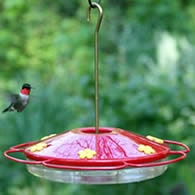Unveiling the Barn Swallow Habits Nesting, Feeding, Migration
The Barn Swallow with its distinctive long forked tail makes it one of the easier North American swallows to identify.
When flying, the feathers are swept back and form a single long point behind the bird.
One sure sign of summer is when you see them flying back and forth to an open barn or outbuilding where they build their nests.
Barn Swallows spend more time in the air than almost any other land bird.
A friend to farmers, these swallows are on an endless search for insects throughout the season.
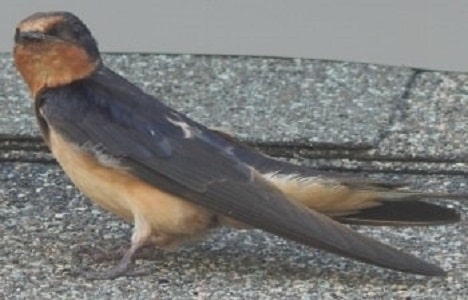
Barn Swallow
Barn Swallow Call
The song: of the barn swallow is a pleasant series of twittering and warbling notes.
It is a complex and musical composition that consists of various trills, chirps, and high-pitched whistles.
The song is typically delivered during flight or from a prominent perch, where the male bird showcases its vocal abilities to attract a mate or defend its territory.
Chirrup: This is the most recognizable call of the barn swallow. It is a short, rapid, and high-pitched chirping sound.
The chirrup call is often used during flight, as the bird communicates with other swallows in its flock.
What Barn Swallows Look Like
Barn Swallows measure 5 1/2 to 7 inches in length with pointed wings and a deeply forked tail.
The bill is very short. Dark blue-black above with a dark rusty throat. The rest of the underparts are buffy or pale rusty.
Females are similar with shorter outer tail feathers than males.
The young juvenile swallows are similar to the adults, but have paler underparts and shorter outer tail feathers.
Mating Habits and Behaviors
Mating habits of Barn swallows include engaging in aerial displays during courtship, which can include diving, swooping, and chirping.
Pairs are formed quickly once they've reached the breeding grounds. Within 2 weeks of arriving, pair bonds will have been made.
Barn Swallows are generally monogamous, with males mating with a single female. However, studies show females will copulate with other males.
Rebecca Safran's research found that female Barn Swallows would breed with males that had darker breast and belly feathers even when already paired with another male.
Just How Faithful Are They
Interestingly, 50 percent of male Barn Swallows care for and feed at least one chick fathered by another male. Sometimes the whole clutch is from another male Barn Swallow.
Paired males will aggressively defend the small area around the nest and guard their mate against other males that might attempt to copulate with her.
Although rare, males sometimes will pair with 2 females, but parental care will be given to the first clutch.
Do Barn Swallows Mate for Life?
Pairs stay together through the breeding season and sometimes will pair in consecutive seasons. However, Barn Swallows do not mate for life.
Barn Swallow Nesting Habits
Barn Swallow nesting occurs primarily in June and July. Both the male and female build the nest.
Working in the morning, Barn Swallows will make up to 1,000 trips to collect mud and grasses before nest completion
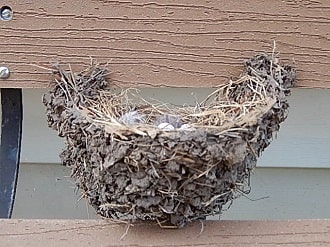
What a Barn Swallow Nest Looks Like
This is one of the few times you can see them on the ground collecting mud and feathers for their mud swallow nest.
Although these birds originally nested in caves and on cliffs, they now use more man-made structures such as barns and the overhangs of decks and patios.
You can offer an artificial nest to try to get them nesting where you want.
What does a Barn Swallow Nest Look Like?
The nest is a cup of mud pellets lined with grass and feathers, located under the eaves of buildings, resting on a beam or some projection in barns, under bridges, and in culverts.
Barn Swallow Preening Feathers
Eggs, Incubation, and Fledging
The female lays 3 to 8 white eggs that are spotted with reddish brown beginning 1 - 3 days after nest completion.
The eggs are incubated by both adults with the female incubating longer. Only females have a brood patch.
The eggs will hatch after 14 to 16 days of incubation. The young will leave the nest in 18 to 23 days.
Like other Swallows such as Purple Martins, unmated male Barn Swallows will sometimes kill the young of other pairs to mate with the female.
Two broods a season may be attempted. Barn Swallows return to the same nest site each season and will make repairs to the old nest in order to reuse it.
| Barn Swallow Nesting Stats | |
|---|---|
| Eggs | 3 - 8 |
| Incubation | 14 - 16 days |
| Nestling Phase | 18 - 23 days |
| Broods | 1 - 2 |
A new nest will be built if no repairable nest is available. Removing the nest during the winter will not keep them from returning.
How do I Keep Barn Swallows From Nesting on My House?
A barrier may have to be built to get them to change sites. Once they move on, the barrier can be removed.
If you do not want them nesting (they can be messy) on your house, you must not let them build their nest. Using some type of commercially available Swallow Deterrent will be needed.
You can remove their nest until eggs are laid. Once eggs are laid, the law protects them, making it illegal to interfere during the nesting cycle.
The image below shows what a Barn Swallows nest looks like with eggs inside.
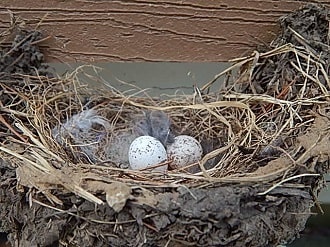
Barn Swallow Nest and Eggs
The adult birds continue feeding the fledglings for about 1 week after leaving the nest.
When the young first leave the nest, they perch in the landing tree. For a short time, the adults will bring food to the young while perched in trees.
Later, the adults will pass food to them in flight, showing them how to catch flying insects.
What do Barn Swallows Eat?
Barn Swallows eat flying insects caught on the wing and feed them to their young. These insects can include wasps, moths, beetles, and gnats.
During the breeding season, these birds feed in pairs, flying at a low altitude, typically over fields and water.
You are most likely to see Barn Swallows following as you mow large field areas. They swoop close to the ground, catching insects disturbed by the lawnmower or tractor.
Barn Swallows and Purple Martins are often seen flying over water together, skimming the surface to bathe or drink.
During the non-breeding season, they feed in small, loosely formed flocks.
Birdwatchers can provide eggshells or oyster shells to Barn Swallows, which they need for calcium and grit, aiding digestion.
Habitat
The habitat of Barn Swallows is mostly open country and marshes, especially near barns, outbuildings, bridges, and culverts.
Since humans are developing more housing in what was once farmland, these birds can be found more and more nesting on house exteriors.
Barn Swallow Migration
Spring migration may start as early as February for Texas and California, but for the most part, April and May will be the peak period.
By August, Barn Swallows will begin forming migratory roosts and heading southward.
By September you'll be hard-pressed to see any around. Both the adults and young will migrate at the same time.
Primary wintering grounds for North American birds are Central and South America.
What is the Lifespan of the Barn Swallow?
The lifespan of the Barn Swallow in the wild averages 4 years. Maximum Recorded - 15 years 11 months.
References: Turner, A. K. (2004). Family Hirundinidae (Swallows and Martins). In Handbook of the Birds of the World, Volume 9.
See Also:
Swallows Facts, Myths, and Folklore
Other Types of Swallows in the World
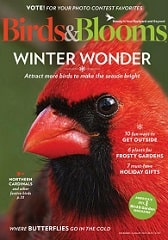
|

|

|

|
| Birds and Blooms | Pioneer Woman | People Magazine | First For Women |




